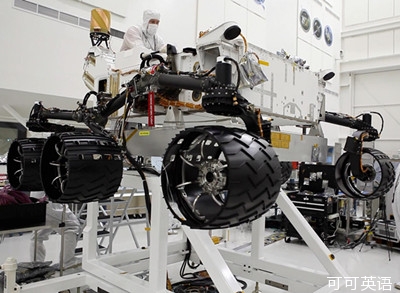The Curiosity rover has achieved plenty of firsts in its six months on Mars. And the last first is especially noteworthy: on February 9th, Curiosity made the inaugural run of its drill, boring into a rock to extract a sample from the interior. It thus became the first robot ever to drill on Mars.
好奇号探测车登陆月球六个月内实现了许多“第一次”。而最后一个“第一次”尤其值得关注:2月9号好奇号探测车首次运行它的钻孔机以提取岩石内部的样本。由此它成为第一个在火星上钻探的机器人。

Curiosity has now gotten some use from most of its science instruments, but not all of them are working. At a conference at U.C.L.A., deputy project scientist Ashwin Vasavada explained that problems are facing the rover's wind and humidity sensors:
目前,好奇号探测车的大部分科学工具都已经派上用场,但并非所有的都能运行。在加州大学洛杉矶分校的一次会议上,副项目科学家 Ashwin Vasavada 解释说探测车的风和湿度传感器存在着问题:
“The humidity sensor is being calibrated. They think it's going to produce some good data—it's measuring a good signal. It's just the physical units don't quite make sense right now.”
“湿度传感器被预先标定了。他们原以为它在测量清晰信号时,会生成好的数据。只是现在的物理单位不太合理。”
Worse is the wind sensor, damaged during the rover's landing. “The wind sensor is actually six different sensors. We lost two of them during landing, and the other four are proving pretty hard to interpret as well. So we actually have no wind data yet.”
风传感器的情况更糟,它在探测车着陆期间受到损坏。风传感器实际上由六个不同的传感器组成,着陆时弄坏了两个,其他四个也很难进行测量。因此我们目前还没有关于风的数据。
A few glitches are to be expected. After all, the Curiosity rover—with its unprecedented size and complexity—is a first in and of itself.
存在几个小故障在预料之中。毕竟凭借前所未有的尺寸和复杂性,好奇号探测车本身就是第一个。













